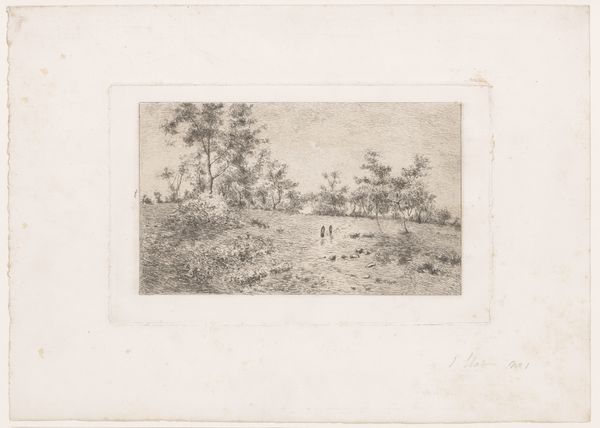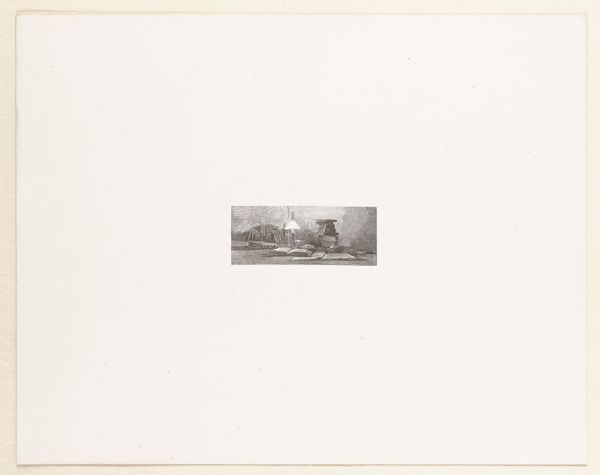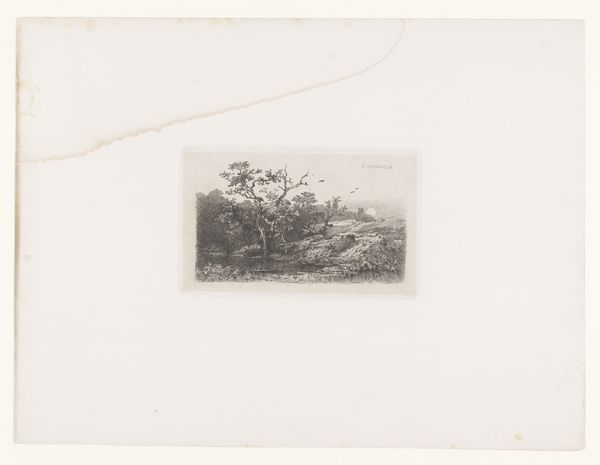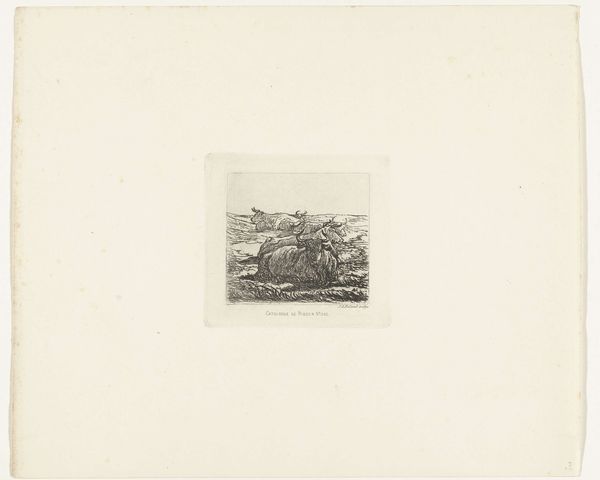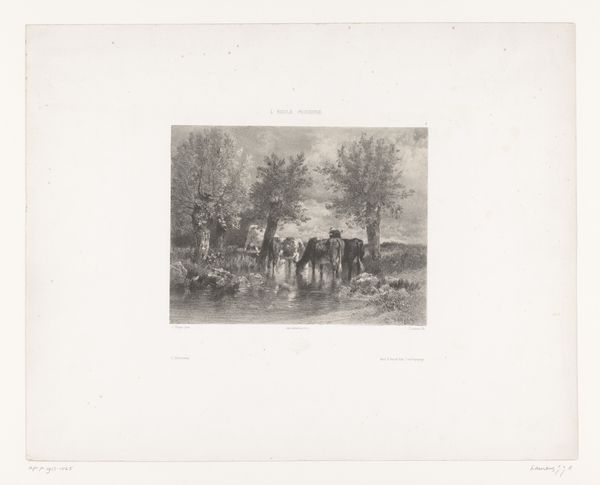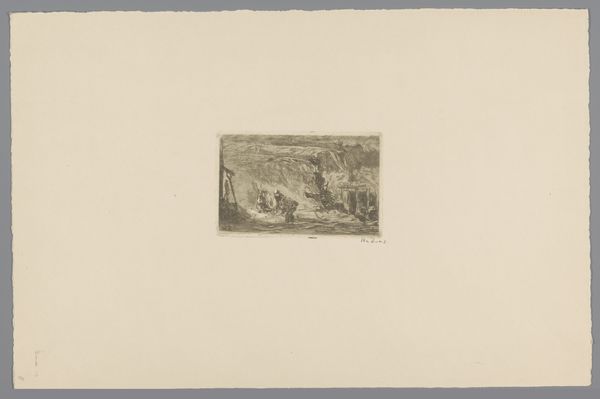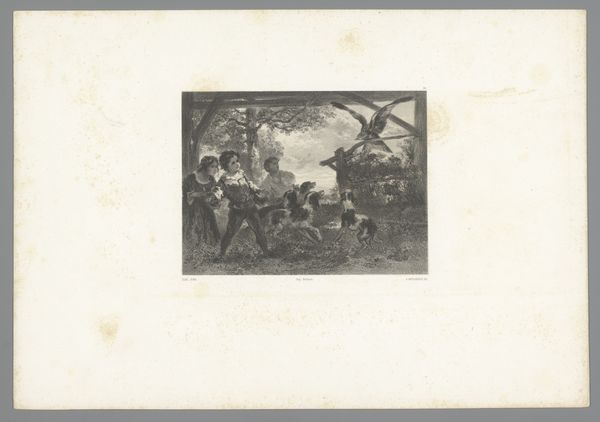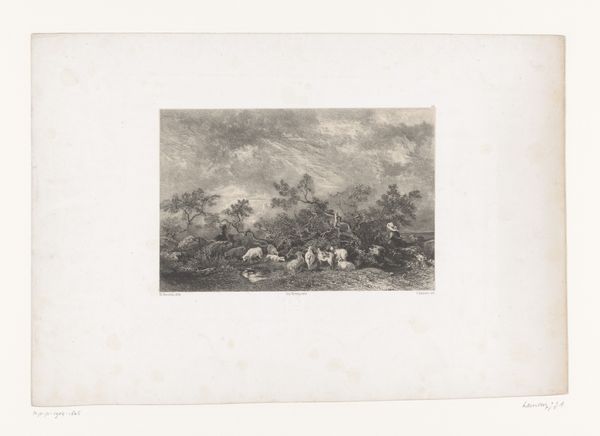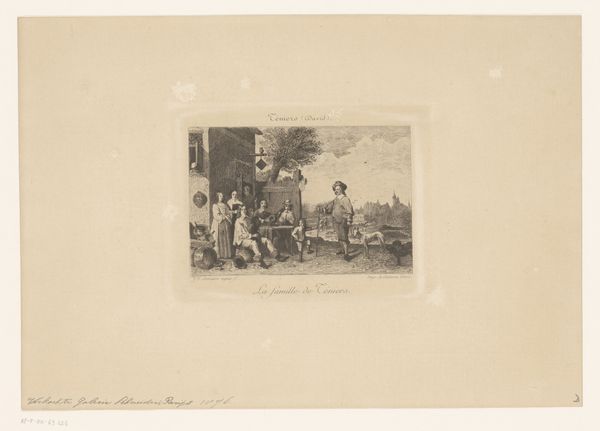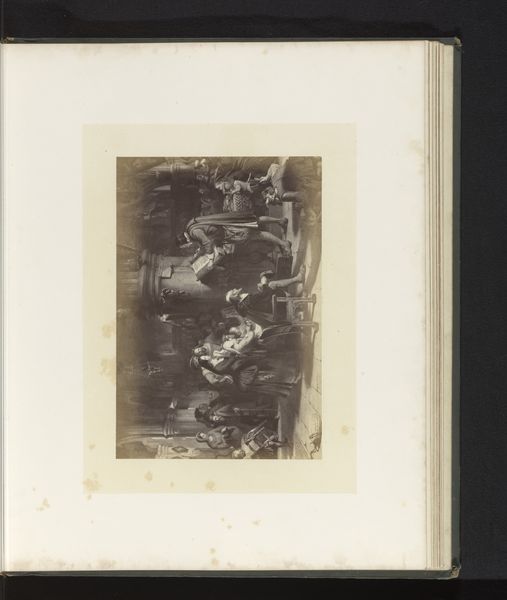
print, etching
# print
#
etching
#
landscape
#
realism
Dimensions: height 69 mm, width 85 mm
Copyright: Rijks Museum: Open Domain
Charles Jacque created this etching of grazing animals by some trees in the 19th century. The image evokes a sense of pastoral harmony that was popular among European artists at the time. This idealization of rural life often served as a counterpoint to the rapid industrialization and urbanization occurring in countries like France, where Jacque spent his career. The etching technique itself speaks to the changing art world of the 19th century. Etchings like this were more easily reproduced than paintings, which made art more accessible to a wider audience beyond the traditional elite. Artists like Jacque were able to make a living selling their prints to an expanding middle class. To better understand Jacque's work, we might look to periodicals and exhibition reviews from his time. We may also explore the print market and collecting habits of the 19th-century French middle class. Art, after all, exists within society, reflecting and shaping the world around it.
Comments
No comments
Be the first to comment and join the conversation on the ultimate creative platform.
